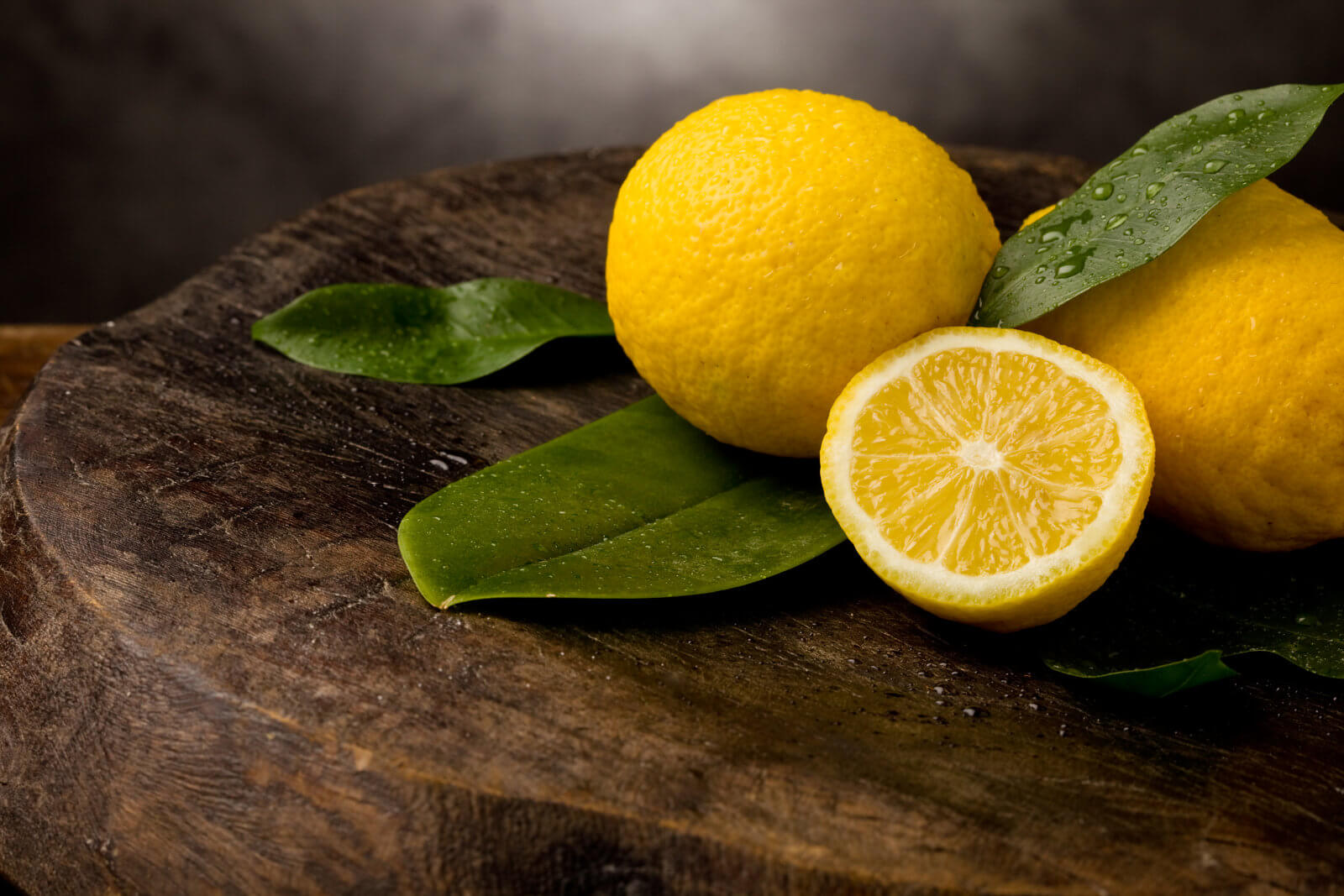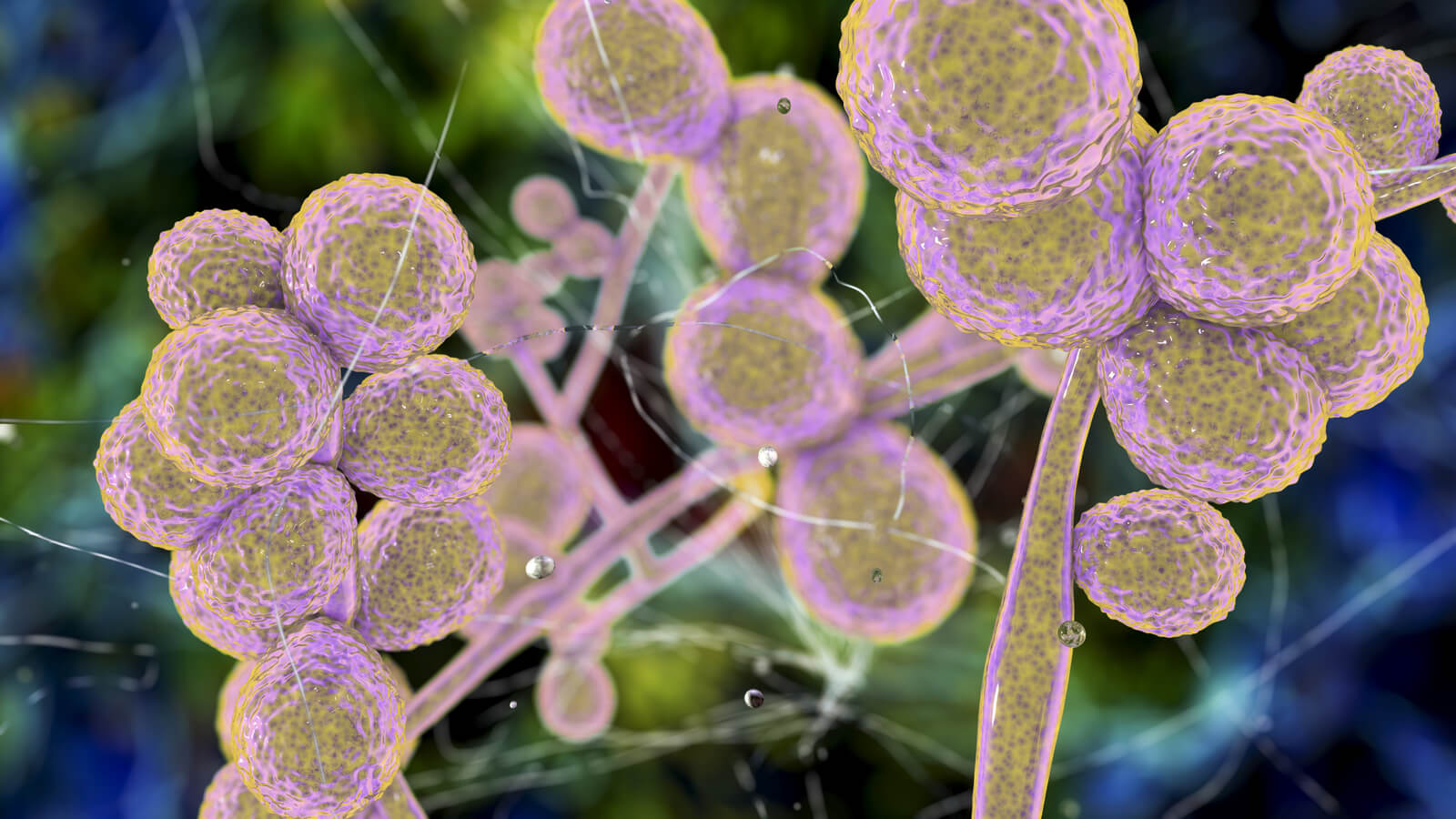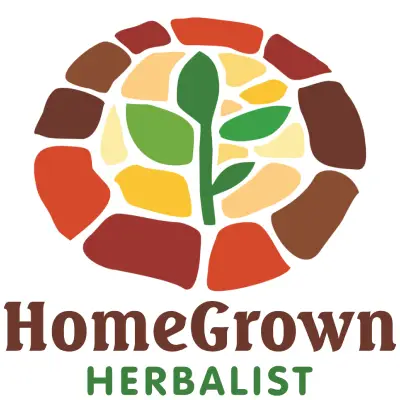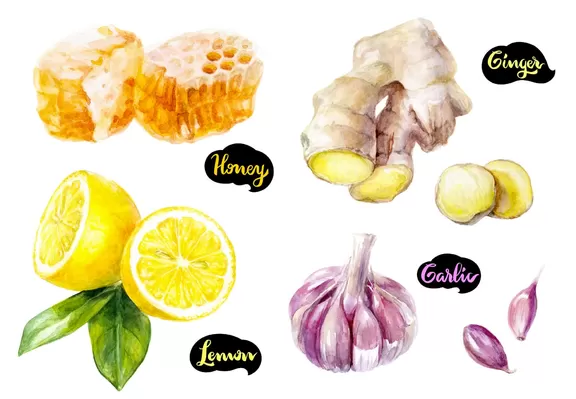
Lemon (Citrus limon), if used in the correct preparations, does appear to be an effective antifungal. But, simple lemon juice is not a good antifungal. And, lemon juice may not hinder the development of common pathogenic fungi. To see the results from lemon against fungus you will need to use an extract or essential oil. This article will focus on lemon juice and extracts.
When it comes to fungal infections, the most common are caused by dermatophytes and Candida. Dermatophytes cause ringworm (tinea) and nail fungus. Candida is the primary cause of yeast infections and oral thrush. And, lemon extracts do appear to inhibit the development of these primary fungal pathogens.
So generally, a lemon extract is a natural antifungal that you might want to keep in your home medicine cabinet / herb collection!
Yet, research is lacking regarding the efficacy of lemon extract against these common fungal pathogens. There are a lot of ways to prepare an extract; i.e., solvents used, fruit / plant parts used, and other processing techniques. These differences in extract preparation may contribute significantly to the antifungal ability of an extract; either benefiting or attenuating.
In this article, we will look at the research discussing how lemon preparations (including lemon juice) affect these common fungal pathogens. And, at the end of this article, there will be a summary of the findings listed for helpful future reference.
Important Abbreviations
This article uses the abbreviation “ZOI.” ZOI stands for “zone of inhibition.” The zone of inhibition is the area around a substance in which a microorganism does not grow; hence the name! Studies often use tests that find the ZOI for a substance. This indicates if a substance will stop the growth of a microorganism and the power of this effect.
Also the symbol µ will be used in this article. This symbol stands for "micro" and denotes micro metric units; e.g., microliters. A microliter is 1/1000 of a milliliter.
Pathogens Behind Common Fungal Infections
According to the United States Centers for Disease Control and Prevention (CDC), fungal nail infections, ringworm (tinea), and yeast infections / thrush (caused by Candida) are the most common fungal diseases.(source 1) In this article, we will look at how lemon affects the pathogens behind these common fungal infections.
Dr. John Herzog (MD)
Dr. John Herzog, a "survival surgeon" from Maine explains what home remedies work best in a crisis situation.
This may be important in the event you require first-aid or are in an emergency situation without easy access to a hospital. Dr. John Herzog has assembled a large collection of home remedies for such scenarios.

Lemon for Ringworm / Tinea (Dermatophytosis)

According to a study published in Current Fungal Infection Reports [9.3 (2015): 164-179],(source 2) dermatophytes are one of the most common causes of skin diseases in the world. Dermatophytosis affects about 25% of the world population, and Trichophyton rubrum (T. rubrum) is the major cause of all dermatophyte infections.(source 3)
Dermatophytosis (a dermatophyte infection) is commonly known as "ringworm" and goes by many names. Another medical term for this condition is "tinea." Tinea infections are named for the location of the body they form on. E.g., athlete’s foot is known as tinea pedis; and, ringworm of the scalp is known as tinea capitis.
Lemon’s Effect on Trichophyton rubrum
A study published in Journal of Pharmacy Research [9.7 (2015): 476-479](source 4) looked at how lemon extract would affect T. rubrum.
The study prepared extracts with water, ethanol (drinking alcohol), and methanol. These extracts were placed on surfaces where T. rubrum was also placed. The goal was to determine the ZOI.
The study found that a 10% to 30% concentration of the lemon extract made with water did not cause any ZOI for T. rubrum. Yet, a 20% concentration of ethanolic lemon extract caused a 13 mm ZOI. A 20% concentration of the methanol extract created ZOI of 10 mm.

Comprehensive Herbalist School
Dr. Patrick Jones, founder of the HomeGrown Herbalist School of Botanical Medicine has been a practicing veterinarian for over 25 years. He is also a clinical herbalist and traditional naturopath.
Kevin Harrington, Original Shark from ABC’s Shark Tank, stands behind Dr. Patrick Jones and HomeGrown Herbalist.
Learn More
Comprehensive Herbalist School
Dr. Patrick Jones, founder of the HomeGrown Herbalist School of Botanical Medicine has been a practicing veterinarian for over 25 years. He is also a clinical herbalist and traditional naturopath.
Kevin Harrington, Original Shark from ABC’s Shark Tank, stands behind Dr. Patrick Jones and HomeGrown Herbalist.Learn More
A 2017 study in the International Journal of Current Pharmaceutical Research(source 5) investigated the effect of a lemon extract against T. rubrum. The study used a highly processed methanol extract of lemon peels. The tests revealed that 100 µL of the extract created a ZOI of 17.5 mm on T. rubrum. By comparison, 20 µL of fluconazole (a synthetic antifungal drug) created a ZOI of 30.1 mm on T. rubrum.
Lemon’s Effect on Other Dermatophytes
A study published in the Journal of Medicinal Plants Research [7.28 (2013): 2136-2139](source 6) looked at how lemon extract would affect 7 different dermatophytes. One of these dermatophytes was also T. rubrum. The other six species were:
- Trichophyton mentagrophytes (T. mentagrophytes)
- Trichophyton tonsurans (T. tonsurans)
- Trichophyton equinum (T. equinum)
- Microsporum nanum (M. nanum)
- Microsporum audouinii (M. audouinii)
- Microsporum gypseum (M. gypseum)
The study created extracts from several plants, one of which was lemon. To create the extracts plant material was ground into a fine powder. The powder was then soaked in a mixture of methanol and ethanol. The study also says water extracts were made. And, it appears the study may have been ambiguous as to how their lemon extract was synthesized.
The lemon extract used by the study was unable to affect any ZOI against all but two of the dermatophytes. These two were T. rubrum and T. equinum. For T. equinum, the lemon extract created a ZOI of 14 mm.
Claire Goodall’s Amazing Guide
Clair Goodall is a bee-obsessed, natural medicine convert from Minnesota (USA). And, she does keep bees!
Clair has created 350+ page book documenting how to replace the toxic products and medications in your home with healthier, all-natural alternatives.

Is Lemon an Antifungal for Candida?

A study in the Journal of Applied Pharmaceutical Science [3.06 (2013): 074-078](source 7) looked at how lemon extracts would affect Candida albicans (C. albicans). This study was somewhat uninformative on how their extracts were created. It appears that simple water may have been used to create the extracts. And, the lemon juice extract may have just been plain lemon juice.
The study found that a lemon peel extract did not affect C. albicans at all. But, a lemon juice extract did cause a 30 mm ZOI. Additionally, dry lemon extract did not cause a ZOI.
Concerning oral thrush, a study published in Phytomedicine [16.2-3 (2009): 118-124](source 8) examined the effects of lemon juice for the treatment of oral thrush. Those who participated in the study were HIV-positive and also had a diagnosis of oral thrush. The study was conducted for 11 days.

HomeGrown Herbalist Herb Shoppe
Owner of HomeGrown Herbalist Dr. Patrick Jones is a practicing veterinarian, Clinical Herbalist, and traditional naturopath. He owns and operates Fairview Animal Hospital in Buhl, ID.
Their herb shoppe provides herbs, essential oils, and tools. If you have some time, check it out!
Learn More
HomeGrown Herbalist Herb Shoppe
Owner of HomeGrown Herbalist Dr. Patrick Jones is a practicing veterinarian, Clinical Herbalist, and traditional naturopath. He owns and operates Fairview Animal Hospital in Buhl, ID.
Their herb shoppe provides herbs, essential oils, and tools. If you have some time, check it out!Learn More
The study enrolled 90 patients, 30 of them were assigned gentian violet, 30 were assigned lemon juice, and 30 were given lemongrass. Some of these participants did not complete the study. Of the 18 participants who took lemon juice and completed the study, 16 were cured and 2 were not cured.
Comparatively, 17 participants who took gentian violet, 9 were cured and 8 were not cured. 17 participants who took lemongrass resulted in 15 cured and 2 not cured. Thus, it appears that the natural remedies of lemon and lemongrass worked better than gentian violet. The study authors reported “In the analysis of the participants who actually completed the trial, the lemon juice showed better results than the gentian violet aqueous solution 0.5% in the treatment of oral thrush in an HIV-positive population.”
Lemon Juice may not be Good at Killing Candida
A study published in the Medical Journal of Australia [140.13 (1984): 780-781](source 10) details small outbreaks of Candida infections in the body among heroin abusers in Australia. The study states there was possibly a common cause for these infections: heroin dissolved in lemon juice before injection.
The study decided to investigate if lemon juice would allow for the growth of C. albicans. The study found that when lemon juice was inoculated at room temperature with C. albicans it allowed for this fungus to grow rapidly.
The study proposed that infections result from the intravenous injection of large amounts of C. albicans in contaminated lemon juice. This proposition was supported by 3 drug abusers simultaneously developing this infection. The study states the following:
We propose that clinical infection results from the intravenous injection of a large inoculum of C. albicans from contaminated lemon juice. This is supported by the simultaneous occurrence of the disease in three drug abusers. We also propose that the lemon was contaminated by the heroin abusers, as disseminated candidiasis occurred only after the lemon was used a second time after being left at room temperature for one week.
Medical Journal of Australia [140.13 (1984): 780-781]
Furthermore, another case report possibly linking lemon juice and C. albicans contamination was published in the British Journal of Ophthalmology.(source 9) The study documents two cases of fungal endophthalmitis (bacterial or fungal infection inside the eye involving the vitreous and/or aqueous humors) of crack-cocaine users who reported they had dissolved crack-cocaine in lemon juice and injected it.
The study authors state: "This report raises the possibility that the lemon juice used to dissolve crack‐cocaine might be another risk factor for fungal infection."
Does Lemon Juice Kill Nail Fungus?
Nail fungus, known as “onychomycosis” is primarily caused by dermatophytes, species of Candida, and non-dermatophytic molds. Yet, dermatophytes, especially T. rubrum, are predominantly the most common causes. Additionally, molds may just be colonizing organisms and not pathogens.(source 11)
So because nail fungus is caused primarily by dermatophytes (particularly T. rubrum) and Candida, the aforementioned research findings could be used to extrapolate that lemon extracts can be used to treat this infection. There may be a lot of anecdotal evidence supporting the idea that lemon can help with nail fungus.

Comprehensive Herbalist School
Dr. Patrick Jones, founder of the HomeGrown Herbalist School of Botanical Medicine has been a practicing veterinarian for over 25 years. He is also a clinical herbalist and traditional naturopath.
Kevin Harrington, Original Shark from ABC’s Shark Tank, stands behind Dr. Patrick Jones and HomeGrown Herbalist.
Learn More
Comprehensive Herbalist School
Dr. Patrick Jones, founder of the HomeGrown Herbalist School of Botanical Medicine has been a practicing veterinarian for over 25 years. He is also a clinical herbalist and traditional naturopath.
Kevin Harrington, Original Shark from ABC’s Shark Tank, stands behind Dr. Patrick Jones and HomeGrown Herbalist.Learn More
But, you will want to use an extract of lemon—and not just lemon juice. Additionally, an essential oil of lemon (which is beyond the scope of this article) would probably work much better than a lemon extract for the treatment of nail fungus.
General Overview of Lemon’s Antifungal Ability
Effects on Dermatophytes (Ringworm)
- For Trichophyton rubrum (T. rubrum) a 20% concentration of ethanolic lemon extract caused a 13 mm ZOI.(source 4)
- For T. rubrum, 100 µL of a methanol lemon peel extract created a ZOI of 17.5 mm on this fungus.(source 5)
- For T. equinum, lemon extract created a ZOI of 14 mm.(source 6)
Effects on Candida
- For Candida albicans, A 30% concentration of ethanolic lemon extract created a ZOI of 10 mm.(source 4)
- 100 µL of methanol lemon peel extract caused a ZOI of 22.2 mm on C. albicans. By comparison, 20 µL of fluconazole created a ZOI of 31.5 mm.(source 5)
- Against C. albicans, a lemon juice extract created a ZOI of 30 mm.(source 7)
- Lemon juice performed better at treating oral thrush in HIV-positive patients than 0.5% gentian violet aqueous solution.(source 8)
- CAUTION: Lemon juice may easily allow for the growth of Candida and other fungi.(source 9)(source 10)
The Side Effects of Lemon
Lemons are, of course, a fruit that you can eat. And, are generally very safe. Yet, certain side effects can occur from eating or being exposed to lemons. Tooth erosion, heartburn, and phototoxicity are all negative side effects that lemon can cause. Additionally, lemon may alter women’s reproductive hormones. Some cultures suggest that lemon is an effective contraceptive for women. To learn more about these side effects, Herbsey has an entire article on this topic: Side Effects of Lemon & Lemon Juice.
About the Author
Nick Gross is a natural medicine enthusiast who has been researching and writing about natural medicine since 2008. Nick is primarily a web developer, but also researches and authors written and video content about natural health. Nick has a bachelor’s degree in Management Information Systems from the University of Northern Iowa.
More on Nick GrossImportant Disclosures & Disclaimers
It is important to use the information you find on Herbsey.com in the right way. Also for legal reasons, these disclaimers and disclosures are necessary. For further information about each, feel free to click the link provided to the page on this website that provides more information.
Medical Disclaimer
The information on this website is not a prescription for anyone. This information is for informational or educational purposes only, and is not a substitute for professional medical advice or consultations with healthcare professionals.
Advertisement Disclosure
Some of the links provided on this article and website are affiliate links. If you purchase a product after clicking on these links, Herbsey.com will earn a commission. Herbsey.com promotes various products through advertisement and text links. For more information: Our Advertisements.







